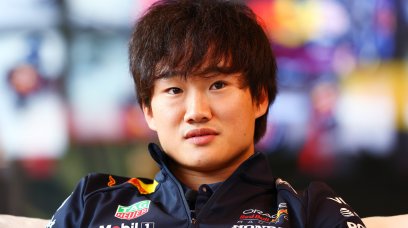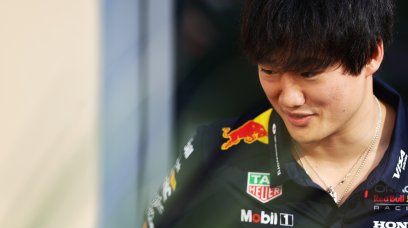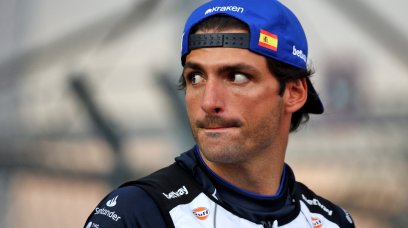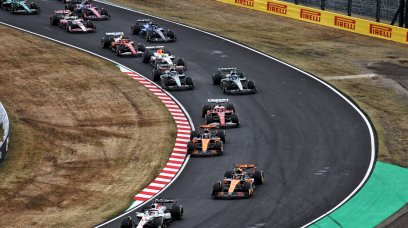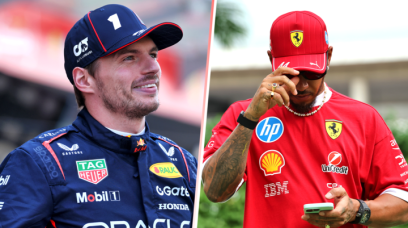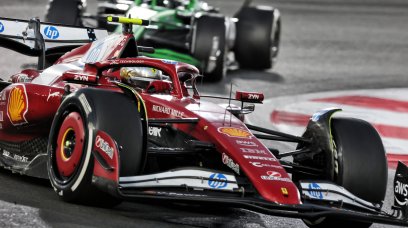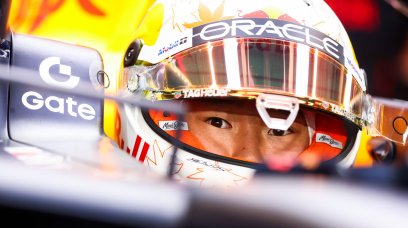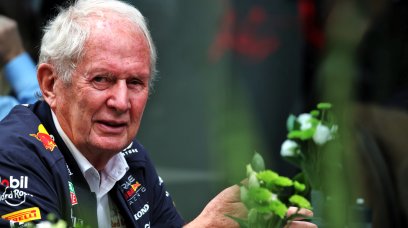There is only a finite number of Grands Prix that can be placed on the Formula 1 calendar in any given year, with the number rising to the low to mid-20s in recent years. This comes as F1 experiences explosive growth worldwide with ticket sales up and seemingly every mayor or local politician finding any way to crowbar 'exploring possibilities to host a Grand Prix' and their cities in the same press release. The latest addition of the Las Vegas Grand Prix has further pushed the more traditional races to look inwards to compete with the influx and ensure their stays on the calendar. They are simply not able to compete with the race hosting fees paid, with the likes of Saudi Arabia and Qatar paying an estimated $55 million on long-term deals until 2030 and 2032, respectively. By comparison, Spa is paying just $22 million with its contract up for renewal after a reprieve was given for next season after the long-sought-after return of the South African Grand Prix fell through. This season, the Belgian GP was shunted to before the summer break, rather than its traditional slot of first after the break, but it is not just financial issues plaguing the long-term future of the race.
Spa troubles
If you were to ask the drivers if Spa should remain on the calendar, the answer would likely be a resounding "yes". But what the drivers want, isn't necessarily what they are going to get. Had a deal been struck with organisers in South Africa for next season, then F1 would be making a return to the African continent and Spa would be in the wilderness having lost one of its two showpiece events - the other being the Spa 24 Hours. It is a fair point that Liberty Media investors make when wondering why there has been no Grand Prix in Africa for nearly a generation now since the last visit to Kyalami in 1993. How can F1 purport to be a 'World Championship' when it does not race in the world's second-most inhabited continent? The stumbling point over agreeing terms for a return to Kyalami has, predictably, been about money. Chiefly, there are the usual hosting fees and venue rental but also circuit upgrades needed to make Kyalami FIA Grade 1. At the current Grade 2 status, it is unable to host a Grand Prix. There are also promoter costs to factor into the sums meaning unless all the numbers agree and make sense, F1 will not be returning to South Africa anytime soon. After Liberty CEO Greg Maffei prematurely committed to a South African GP, Spa's prospects appeared bleak, but as the prospect of a return to Kyalami was abandoned - for the time being - it leaves the Belgian GP in both a good and bad place. It is good news for Spa owing to the fact that it is confirmed on the calendar for next year. There is no better selling point than actually being on the calendar, delivering a race and putting on a show. And while Spa wrangles for its future on the calendar in the long-term, it has been taking on a concerted improvement drive.
Spa upgrades
If you were to ask the drivers if Spa should remain on the calendar, the answer would likely be a resounding "yes". But what the drivers want, isn't necessarily what they are going to get. Over the past couple of years, Spa has undergone an aggressive redevelopment of facilities and the overall 'show' beyond just an F1 Grand Prix, including giving the off-track entertainment a boost. The ageing facilities have been given a much-needed face-lift while traffic management has been of vital importance given the historically poor nature of getting a couple of hundred thousand people out of the middle of a forest in the southeast of the country. This project earned platitudes from F1 CEO and President Stefano Domenicali at the 2022 event, hailing the "incredible attention to the people" the circuit had focused on. But for all the upgrades to facilities, it is the track itself which has drawn the most attention over recent years.
Spa track changes needed
Even in its shortened version, Spa is one of the most iconic tracks in the world, with famous corners such as the La Source hairpin, the exhilarating Pouhon and the run through Stavelot and Blanchimont at the end of the lap. But in recent years, it is the Eau Rogue-Raidillon sequence that has drawn attention and condemnation. In 2019, Anthoine Hubert was killed in the F2 feature race in a chain-reaction accident. Demands were made to modify the section of track to allow drivers more run-off and room to which recover from any mistakes at the top of the hill. A multi-car pile-up in the W Series race in 2021 and other incidents in GT racing only added further credence to the calls. So for last year, circuit bosses embarked on a redevelopment programme of Eau Rogue and Raidillon, while maintaining the broad character of the famous sequence. The wall at the top of the hill on the left-hand side was pushed back, creating swathes of run-off space. But tragically, less than four years after Hubert was killed, 18-year-old Dilano van 't Hoff lost his life in a FRECA race after a collision further along the Kemmel Straight in wet conditions on a final lap restart. The accident happened on the Saturday of the Austrian Grand Prix, with Lance Stroll emotionally calling for the sequence to be changed - even though the two fatal accidents did not happen at the same point on the track. "It's not fair what happened today. That corner needs to be changed. We've been saying it for years," Stroll told media including RacingNews365 at the time. "They need to do something. We are playing with fire in a couple of weeks' time. "We seriously need to think about what to do with that corner because it's never fun going through there. "Every time we go through there we put our lives on the line, and today we saw something bad happen and it's not right. "We discussed it and then it blows over and it needs to be changed."
The Circuit takes all necessary measures to ensure that the activities on the track can take place under the best possible safety standards
Spa-Francorchamps spokesperson
Scrupulously adhering to safety requirements
While those changes have not been made ahead of this weekend's race, a spokesperson for the circuit told RacingNews365 : "The Circuit takes all necessary measures to ensure that the activities on the track can take place under the best possible safety standards. "Spa-Francorchamps is subject to the obligation of being granted a Grade 1 certification from the FIA, applying the most recent safety standards required in order to be able to host the Belgian F1 Grand Prix but also all the international and national championships taking place on our track. "We respect these standards scrupulously. Track safety is a constant preoccupation for the Circuit of Spa-Francorchamps and all necessary arrangements are organised as required in this sense every year, including during the season, so as to minimise to the maximum the risks that are inherent in the practice of motorsports and to meet the criteria imposed by the FIA."
Spa's future
Now Spa has delivered on its ambitious programme of redevelopments to facilities, the circuit and the off-track spectacle, it deserves time to allow them to bed in and begin delivering results. The very fact that it is already confirmed on the 2024 calendar is good news, even if it will keep the same end of July slot. But sentiment can only deliver so much. Spa must now deliver on this second chance it has been given and prove it is effectively undroppable from the calendar. Simply being a driver's track is just not enough anymore.
Most read
